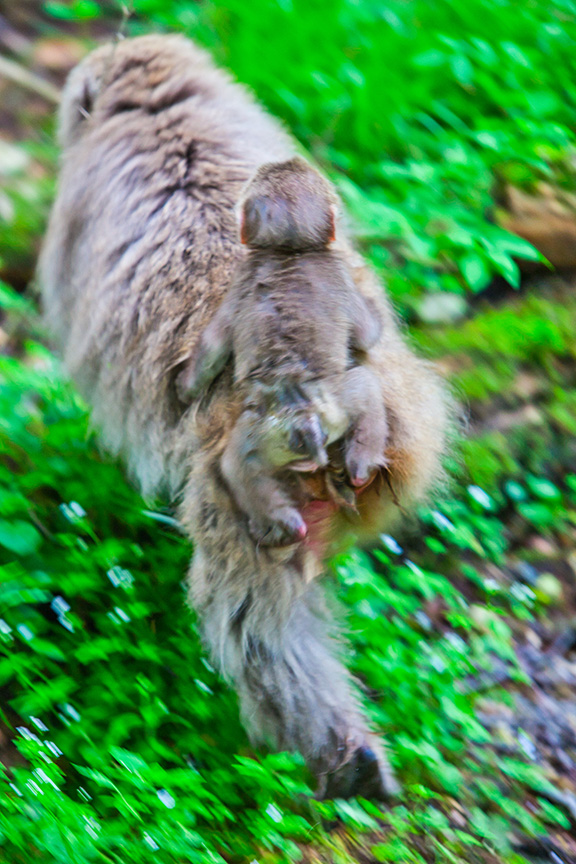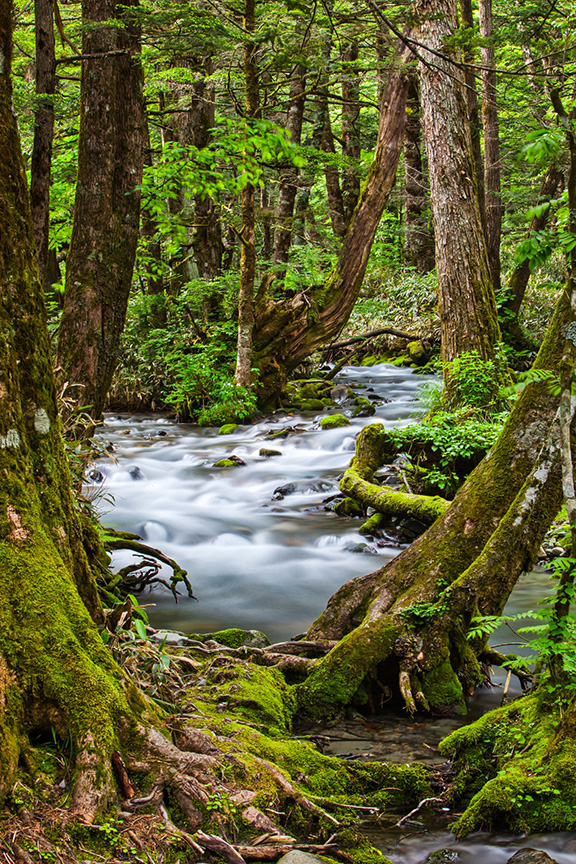One of the joys of living in Japan for me at least is the array of literature one can consume. Over the years, Japanese writers have managed to immortalize in words almost the entire country, from the remotest village to the largest metropolis. The early chronicles of Japan, The Kojiki or Nihongi, have served as a kind of travelers’ guide for those with the patience to wade through the heavy text woven with myth and folklore.
I love the writers of the Taisho and early Showa eras. They shed a light on the country’s struggle to meld modern western ideals with millennia of tradition as foreign to the Japanese, as the “barbarians” themselves.
A master of using words to show the absurdity of the times, it was Ryunosuke Akutagawa’s book “Kappa” that first drew my attention to Kamikochi (upper highlands), nestled in the Hida mountain range in western Nagano. The story is a satirical look at life in Japan in the 1920s, seen through the eyes of a hiker who stumbled upon the dwellings of a kappa population while attempting to climb the peaks of Hotakadake (Northern Japan Alps). The hiker is in fact a patient in a psychiatric facility, that recanted his adventure to anyone who’d listen. The story goes into great detail to disclose the daily shenanigans of the kappa whose lifestyle seemed uncannily familiar.
A kappa is a kind of river sprite described as a turtle-like human with a beak and webbed feet. They have a small bowl on the head which must be kept moist at all times to ensure survival. They walk upright. They are experts in medicine and have known to extinguish fires in cases of emergency. They are not above eating us, so it is best not to actively seek them out.
Every year, from late April until the end of October, Kamikochi teems with visitors from all over Japan—and the world—looking for respite from their daily drudgery, or simply to enjoy one of the nation’s most picturesque vistas. From the entrance near Taisho Pond, you can almost follow by eye the Azusa River with its brilliant blue waters, as it winds its way up to the Hotaka Range smattered with ever-present snow much like icing on a cake.
In autumn, clouds lazily hang just above the valley, seemingly separating it from the mountains, giving the impression the peaks may well be home to the gods. During the warmer months, in the morning you are often greeted by a mist, slithering its way through the valley, adding mystery to every step you take and enticing you to see something in the shadows: a kappa perhaps.
If you want to do nothing more than soak up the ambiance while enjoying the view with good food and friends, then you need do little more than get off the bus at the terminal near Kappabashi (Kappa Bridge). From there you can enjoy the quintessential view while sipping on a local brew and munching down some fire-grilled trout or sanzoku-yaki, a kind of crunchy fried chicken that goes down really well with beer. On the other hand, you can follow the trails up to camping grounds and lodges closer to the mountains, eventually trekking and climbing the peaks.
Kappabashi is the centerpiece of the Kamikochi experience. There are numerous hotels, a camping ground, and eateries. Day trippers can enjoy a bath at a number of hotels before leaving in the evening. Prices range from ¥600 to ¥2100, so choose carefully. The Alpen Hotel is the cheapest and closest to the bridge, so it might be your best bet if you’re on a tight schedule and budget.

Local maps can be picked up from the visitor center near the bus terminal. They have good information on routes and can give you a heads up on any wildlife you may encounter. The area is alive with Japanese macaques. They aren’t shy and will go about their business for the most part, even venturing pretty close to people. Please don’t let your desire for a good Instagram shot overrule common sense. They are wildlife and should be treated with respect, particularly when carrying young. They can be aggressive and defensive when provoked.
The main hiking trails are a good two-hour round trip by foot either heading towards the mountain range or back to the Taisho Pond (you’ll pass it on the way in). There are routes that follow the river, or weave through the forest and former grazing fields. While the cattle have long since left, the paddocks become a fiesta of flowers in the summer months of June and July. They are easy trails and not taxing on kids or elderly visitors. Pack yourself lunch and spend the day strolling the routes, giving yourself plenty of time to fully relish the experience.
Taishiro Shitsugen on the way to or from the Taisho Pond is a small marshland alive with owers during the summer.
Taisho Pond is a result of Mt Yakedake erupting back in 1915. This led to a natural damming of the river which in turn led to a forest swamp. It is closest to the Kamikochi entrance and affords a spectacular view of the valley in its entirety. When the sky is reflected off the waters, it can take your breath away.
Myojin Pond in the opposite direction is a solid 70 to 80-minute walk from the main visitors area. It is much more solemn and tranquil as it is right at the feet of the mountain range, hence darker. It is home to a shrine, and the pond sports a jetty and a small boat that is used in Shinto festivals in October. The waters are pristine, and you can easily see the trout that will most probably be caught and served up at the small outdoor eatery nearby. This is the best place to eat trout freshly grilled on open fire.
To really enjoy the magic, stay overnight and soak up the stars and the moonlight. The view takes on a new character that can only be enjoyed after the hordes have left and the dust settles. The weather changes quickly. Wear layers that can be quickly removed and added and wear strong walking shoes and carry rain gear as rainfall is a frequent occurrence.

Getting There
Main access is by bus from either Takayama or Matsumoto. From Takayama Bus Center take the bus bound for Kamikochi. You’ll transfer to a special bus at Hirayu Onsen, which takes you to the Kamikochi Terminal (¥5,190 return/¥2,730 one-way).
From Matsumoto you can take either the train or a bus (¥4,550 return/¥2,450 one way). There are ticket machines at Matsumoto Station with English instructions.
If you drive, cars can be parked at either Sawando or Hirayu (¥600/day), and you can take a bus from there. The bus costs anywhere from ¥800-¥1,250 depending on where you get on/off. Buses run every 30 minutes subject to seasonal changes.
Buses also run directly to Kamikochi from many major cities. Accommodation prices vary throughout the year, so check the booking sites to find the best time to fit your budget.




